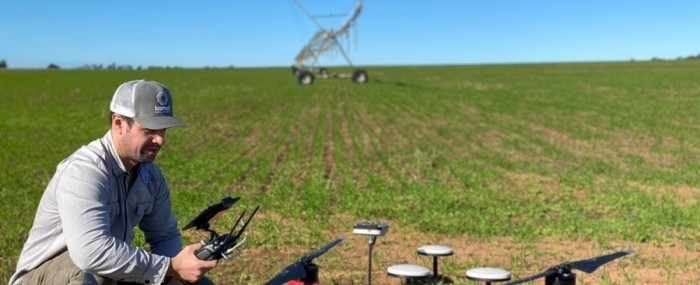
Algorithm adapted to Brazilian agriculture can facilitate use of precision irrigation
12 de julho de 2022By José Tadeu Arantes | FAPESP Innovative R&D – Understanding the spatio-temporal variation of water consumption in irrigated areas is fundamental to the intelligent management of water in agriculture. A study conducted by Wagner Wolff enabled a crop evapotranspiration algorithm to be developed and optimized by field observation.
Wolff is a former postdoctoral researcher in the Biosystems Engineering Department of the University of São Paulo’s Luiz de Queiroz College of Agriculture (ESALQ-USP) in Brazil, under the supervision of Professor Marcos Vinicius Folegatti. He is currently leading a project supported by FAPESP’s Innovative Research in Small Business Program (PIPE) to validate this technology for the domestic market in irrigated agriculture.
“Many algorithms have been proposed to determine evapotranspiration based on surface energy balance by remote sensing [SEB-RS]. The problem is that these algorithms were developed for specific conditions, in terms of the sensors involved as well as the sensing level [orbital via satellite or suborbital via drones], climate, soils and crops. Generalizing these for areas with high diversity, as is the case in Brazilian agriculture, is a huge challenge,” Wolff told Innovative R&D. “The main novelty in the algorithm we developed is that it’s adjusted on the basis of field observation. In every processing run, the parameters and models in the algorithm are updated, and evapotranspiration is mapped with a high degree of accuracy. You could say that before we achieve precision irrigation, we need ‘accuracy irrigation’. Only then can we be sure that managing variable-rate irrigation works.”
The algorithm, which is called ground-truthed surface energy balance (GT-SEB), uses in situ observation for calibration purposes. The study was performed in two experimental areas, one on ESALQ-USP’s Areão farm in Piracicaba, São Paulo state, and the other on an experimental farm belonging to EMBRAPA Western Agriculture in Dourados, Mato Grosso do Sul state. This is one of the decentralized units of the Brazilian Agricultural Research Corporation (EMBRAPA).
Data from remote sensors on board satellites and drones, and from weather stations, is merged with data from field observation. Constraints apply to each processing area, generating new parameters and models, and enhancing the algorithm’s performance by reducing uncertainty and generalizing more effectively for different weather conditions.
“We used images from orbital sensors Operational Land Imager [OLI] and Thermal Infrared Sensor [TIRS] on Landsat 8, and from a high-resolution suborbital sensor with an Altum camera mounted on a drone,” Wolff explained. “The weather variables needed for processing by the algorithm were obtained from stations near the experimental lots. Two additional runs using in situ observation of evapotranspiration constitute the difference between GT-SEB and all other such algorithms. One is used for automatic selection of ‘anchor pixels’, and the other for optimization of the parameters in the algorithm. Both aim to reduce the degree of error between observed evapotranspiration and evapotranspiration estimated by GT-SEB.”
Center pivot
The algorithm is described in an article published in the journal Agricultural Water Management. Its applications include management of center pivot variable-rate irrigation. In this kind of system, a suspended pipeline with sprinklers pivots in a circle over the crop. The pipeline is mounted on wheeled trusses that move it through the field while spraying water. Both water and electricity are supplied via the pivot.
Evapotranspiration mapping is used to determine irrigation zones comparable to “pizza slices” [see figure below]. Pivot speed is controlled in each “slice” so that the water is applied at the optimal rate for the sector concerned. In conventional irrigation, only the field sensor (the red circle in the figure) determines the flow rate, and spraying is fixed. The study found that variable-rate irrigation saved 31% of the water and power used in conventional fixed irrigation.
“GT-SEB is currently part of the development of IrrigaTruth, a smart system that facilitates center pivot precision irrigation management for farmers and is a product of the startup WaterTruth,” said Wolff, one of the startup’s founders.
The study was supported by FAPESP via five other projects (16/15342-2, 17/19398-5, 21/00720-0, 21/12007-6, and 21/12245-4).
The article “Optimized algorithm for evapotranspiration retrieval via remote sensing” is at: www.sciencedirect.com/science/article/abs/pii/S0378377421006673?via%3Dihub.
